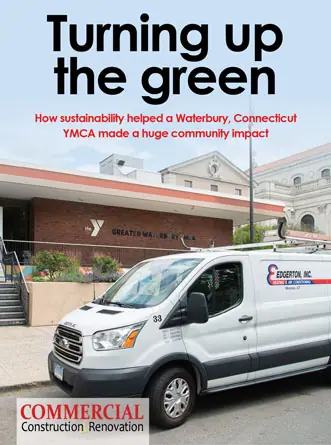Sustainable architecture that seeks to reduce the negative environmental impact of buildings is becoming increasingly popular.
This type of architecture uses materials, energy, and development space efficiently and in moderation.
The idea behind this is to make sure that the implementation of available resources does not wind up affecting the collective well-being or make it unfeasible to avail resources in the future.
If you plan to implement sustainable architecture in your next building project, here are four principles that you need to be aware of:
1. Energy-efficient design
It is estimated that the energy consumed in the residential and commercial structures in 2018 accounted for 20% of delivered energy consumption worldwide.
And as per the Energy Information Administration, in the early 2020s, the total electricity consumption in buildings in non-OECD (organization for economic cooperation and development) countries will exceed electricity use in OECD countries.

This calls for the need for energy-efficient measures.
You can improve the energy efficiency of a building by decreasing the amount of energy required for lighting, heating, running appliances, and so on and using renewable, non-carbon-based energy.
Solar-powered buildings are a great example of energy-efficient design. If you look at the statistics, solar-powered buildings can improve the efficiency of heating and cooling systems by 30%, and the operating cost of an efficient solar water heater could be reduced by 90%.
You should also install high-quality windows and sound insulation as most of the heat from the building escapes through the windows. Or go for home automation as it allows the occupants to use the building’s energy more efficiently and economically.
LED lighting can also be to save energy as well as energy cost. If you need to illuminate a large indoor space, you can opt for LED High Bay Lights.
2. Selection of a suitable site
This principle focuses on selecting a site for a project that will help reduce energy and resources consumption while still creating an efficient structure.
The site selection will depend on the type and the size of the project.
The factors to be considered while choosing a site before the construction of the project include the availability of:
- Skilled and cheap labor.
- Transportation facilities.
- Natural materials can lessen construction and transportation costs.
- Town planning.
- Ecological conditions.
- And so on.
On the other hand, the factors to be considered for the after construction of the structure include accessibility of Public Utility Services including electricity, water, and sewage disposal, ease of drainage, land contour in relation to the cost of the building, cost of the land, its distance from workplaces, its location with regard to schools, colleges, and public buildings, transport facilities, and so on.
3. Use of renewable resources
In order to sustain the environment, it’s crucial that you choose only the materials and products that will have the lowest environmental impact.
Though organic materials, such as natural stone and wood, look like the best choice, natural resources should be treated judiciously.
The best way to go about it is by picking materials that don’t take a long time to renew, like bamboo, and are extracted in an environmentally responsible manner.
And when buying products, check for labels, certifications, and standards that give trustworthy info about the origin of the products and help you spot environmentally friendly products.
For instance, when you buy wood products, you will find an FSC label on them that ascertains the wood used was extracted sustainably.
4. Design to protect and conserve water
An estimate shows that approximately $0.5 billion to $1 billion is spent on water and sewer yearly in the federal sector alone. Reducing water use and protecting the quality of water thus should be the primary objective of sustainable design.
While designing a building, fixtures that can minimize the use of water without affecting performance can be installed. Use only highly efficient plumbing fixtures and integrate other strategies to save water in buildings.
For instance, you can install WaterSense labeled showerheads models, which have flow rates of less than 2 gallons per minute. Or install foot-operated or temporary shut-off valves with kitchen faucets to stop the flow of water while washing dishes or scrubbing.
You can also use rainwater harvesting technology to collect rainwater from rooftops. Another great idea is to install cooling towers that come with delimiters to decrease drift and evaporation. Plus, if you choose hybrid cooling towers, they can allow dry-cooling whenever climatic conditions permit.
Apart from that, you can implement an efficient site design to help minimize stormwater runoff.
Wrap-Up
Sustainability in architecture design is of paramount importance. As more and more people are becoming environmentally conscious, the demand to incorporate sustainability principles in building design is also rising.
Architects and designers should be thus up-to-date with the main principles of sustainable architecture so that they can be incorporated into their projects. The 4 principles in this article can guide you while designing your next project.
Author Bio:
Karen Lopez is a freelance content writer at marketing digest. With her keen interest in home decor and remodeling, she loves contributing insightful articles about the latest renovation trends in residential and commercial spaces. In her free time, she enjoys listening to Jazz music and watching Netflix.








 The 2024 virtual Men’s Round Table will be held Q4, 2024, date TBD.
The 2024 virtual Men’s Round Table will be held Q4, 2024, date TBD.












